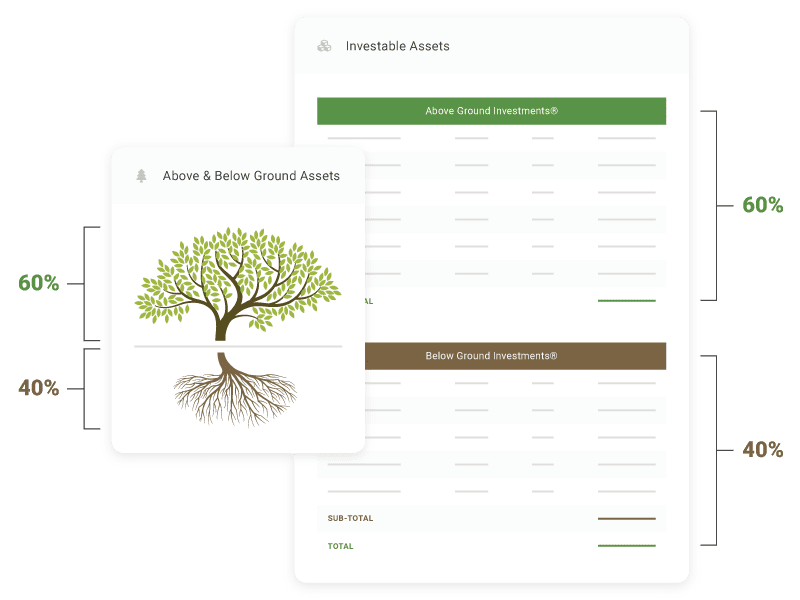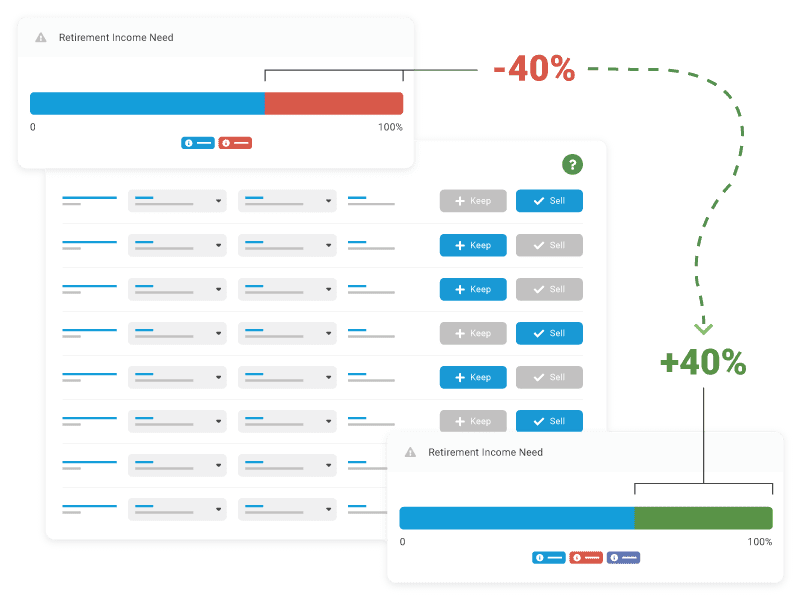When planning for retirement, it is important to take inflation into account. Not only can inflation have a major impact on how much money you need in order to retire comfortably, but it can have a major impact on things like your retirement savings.
If you’re planning for retirement, here are some of the things you may want to know about inflation and how it could be affecting you.
What is inflation?
So what exactly is inflation? simply put, it’s a general increase in prices and a fall in the purchasing value of money. It is caused by things such as an increase in the money supply, rising costs of production, or demand-pull inflation.
Currently, the inflation rate is at 8.6%, which is the highest it has been since 1981. In turn, this has had a major impact on basic necessities like food, gas, and energy, and ultimately the wallet of the consumer.
Growing Concern Over Inflation & Retirement Savings
If you’re worried about inflation and the impact it may be having on your retirement plans, you’re not alone. In fact, Voya Financial conducted a survey in March 2022 of 1,000 individuals. Here’s what their data tells us:
- 74% of Generation X and 73% of Millennials are worried about the effect inflation is having on their retirement savings.
- 66% of the respondents were worried about how inflation affects their ability to save for retirement, and 43% of all respondents have already had to dip into a fund they’d had set aside for retirement.
This worry is not unfounded. Think of it this way, retirement savings need to last for 20-30 years. Adjusting retirement goals may need to happen over time in order to account for rising costs. For example, if you retire at 65 and expect to live to 95, that’s 30 years in retirement. If the inflation rate is 3%, then prices will more than double during that time period.
This is where understanding things like the Consumer Price Index (CPI) come in. The CPI measures changes in the prices of goods and services that people purchase for day-to-day living. The CPI is used to calculate the inflation rate.
Inflation During Retirement Planning
As you calculate how much you need for retirement adjusting for inflation or understanding things like the cost of living can be crucial. For those who are already in retirement, the cost of living seems to be going up, but their income may not be keeping pace. In order to keep pace with inflation, retirees need to make sure that their retirement savings are invested in a way that will grow over time. If they don’t, their nest egg could shrink over time.
For example, let’s say you have $50,000 saved for retirement. If inflation is 3%, then the purchasing power of your savings will decrease by 3% each year. In other words, the $50,000 you have saved today will only be worth $48,500 in 10 years and $46,950 in 20 years. This can have a major impact on your retirement plans, especially if you’re relying on regular inflation-adjusted withdrawals from your retirement savings.
3 Ways to Account for Inflation While Planning for Retirement
1- Invest in assets that have the potential to outperform inflation.
This could include stocks, real estate, or collectibles. Another option is to purchase inflation-protected investments, such as TIPS (Treasury Inflation-Protected Securities) or I Bonds (inflation-indexed savings bonds). These allow you to maintain the purchasing power of your savings, even as prices rise.
There are drawbacks of TIPS or Bond. They can be difficult to sell and may not provide the level of growth you’re hoping for over time. TIPS are a great way to safeguard your assets against rising prices, but there are a few drawbacks to consider before investing. First, TIPS typically have lower interest rates than other types of bonds. This means may not earn as much in interest payments.
Additionally, TIPS are subject to income tax, so you may not get the full value of your investment if you’re in a high tax bracket. TIPS are also only available in denominations of $100. Meaning you may need to invest a significant amount of money in order to get started.
2 – Consider adjusting your retirement date.
The day of retirement is a sacred cow for many workers. If inflation is a major concern, working for a few extra years can help ensure savings will last throughout retirement. In fact, thirteen percent of Gen Xers and baby boomers said they’ve already postponed or are considering delaying leaving the workforce because of rising costs.
There are a few downsides to delaying retirement, however. For one, it means indivuals need to keep working for longer, which isn’t exactly a retirement dream come true.
It also means less time to enjoy retirement years, and less time to travel or spend time with family and friends.
And lastly, it means we have to save more money. This can be especially difficult if an individual is already struggling to make ends meet.
3 – Use a ROTH IRA or a ROTH 401k.
A Roth IRA or 401k can be a great way to protect your retirement savings from the effects of inflation. Because withdrawals from a Roth IRA or Roth 401k are tax-free, you won’t have to worry about losing any of your money to taxes. This can be especially beneficial in retirement when your income may be lower and you
There are a few potential downsides to Roth IRAs and Roth 401ks that potential investors should be aware of. First, contributions to Roth accounts are made with after-tax dollars. This means you won’t get the up-front tax break that you would with a traditional IRA or 401k.
Second, Roth withdrawals are taxed as ordinary income. If your tax bracket is higher when you retire than it is now, you may end up paying more in taxes on your withdrawals than you would with a traditional IRA or 401k.
Finally, Roth accounts have strict contribution limits (currently $5,500 for Roth IRAs and $18,000 for Roth 401ks). If you’re looking to save a large sum of money for retirement, a Roth account may not be the best option.
4- Don’t count out your Social Security Benefits.
Each year, Social Security benefits are also adjusted for inflation. So even if inflation eats into the value of your retirement savings, your benefits will keep pace with the cost of living.
There’s no doubt that social security benefits are a vital source of income for many Americans. However, there are also some downsides to social security that many often overlook. For example, social security benefits are taxable. This means recipients may end up paying taxes on a significant portion of their benefits.
In addition, social security benefits are not always sufficient to cover all of a recipient’s expenses. This is especially true if the recipient has a low income. As a result, social security recipients must be careful budgeting their finances to make ends meet.
Stay Focused on Your Long-Term Retirement Goals
Planning for retirement may seem tough during a time when inflation is on the rise and global unrest continues. Staying focused on your long-term retirement goal is critical. After all, it’s easy to get caught up in the highs and lows of a volatile stock market or the thoughts of a recession looming. However, not making a knee-jerk reaction to your retirement savings or plan is important to remember.
Consult your financial advisor or a certified financial planner here at Kaizen Wealth. If you have questions about inflation during retirement planning, we’re here to help.



